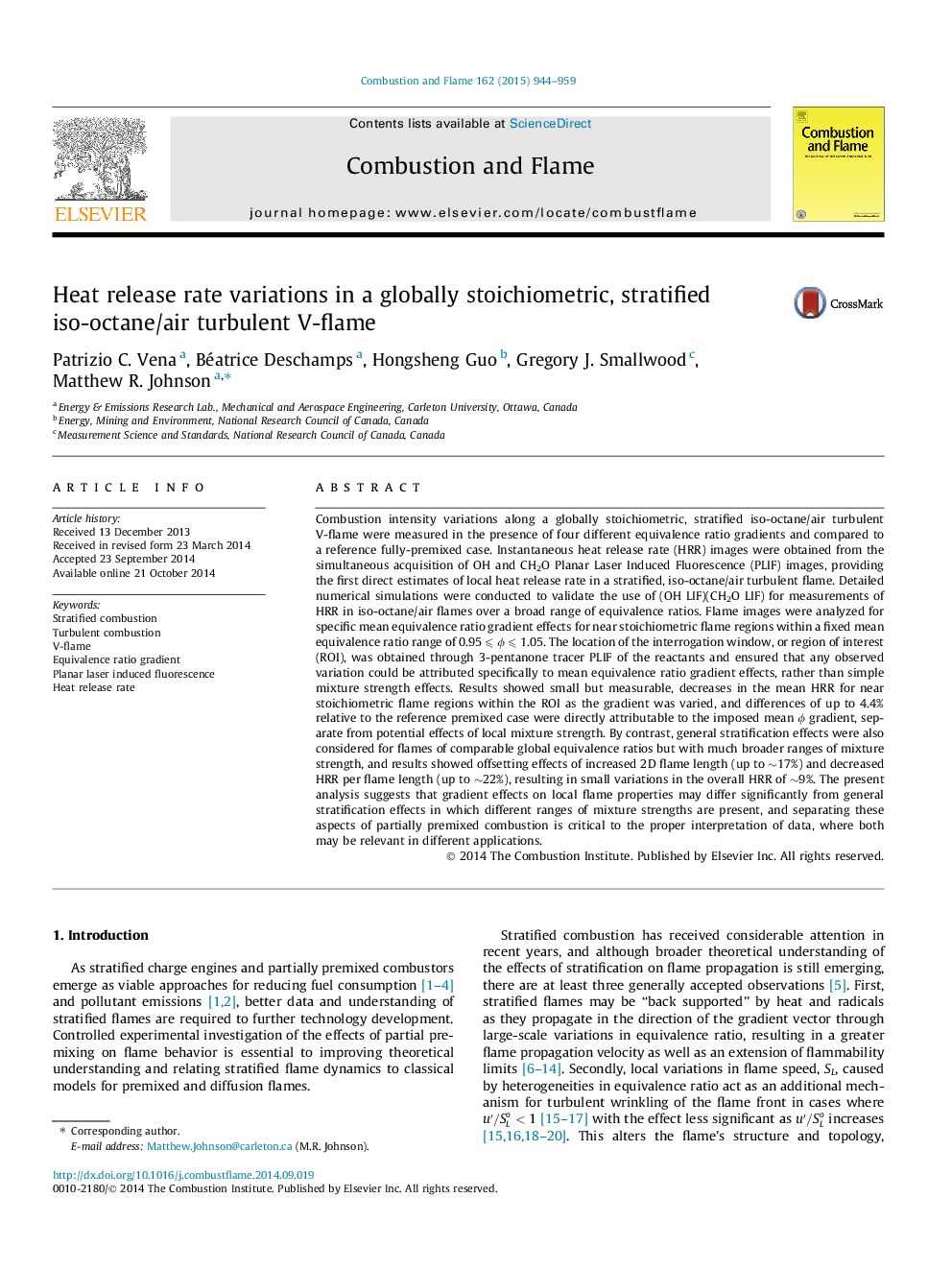| Article ID | Journal | Published Year | Pages | File Type |
|---|---|---|---|---|
| 168730 | Combustion and Flame | 2015 | 16 Pages |
Combustion intensity variations along a globally stoichiometric, stratified iso-octane/air turbulent V-flame were measured in the presence of four different equivalence ratio gradients and compared to a reference fully-premixed case. Instantaneous heat release rate (HRR) images were obtained from the simultaneous acquisition of OH and CH2O Planar Laser Induced Fluorescence (PLIF) images, providing the first direct estimates of local heat release rate in a stratified, iso-octane/air turbulent flame. Detailed numerical simulations were conducted to validate the use of (OH LIF)(CH2O LIF) for measurements of HRR in iso-octane/air flames over a broad range of equivalence ratios. Flame images were analyzed for specific mean equivalence ratio gradient effects for near stoichiometric flame regions within a fixed mean equivalence ratio range of 0.95 ⩽ ϕ ⩽ 1.05. The location of the interrogation window, or region of interest (ROI), was obtained through 3-pentanone tracer PLIF of the reactants and ensured that any observed variation could be attributed specifically to mean equivalence ratio gradient effects, rather than simple mixture strength effects. Results showed small but measurable, decreases in the mean HRR for near stoichiometric flame regions within the ROI as the gradient was varied, and differences of up to 4.4% relative to the reference premixed case were directly attributable to the imposed mean ϕ gradient, separate from potential effects of local mixture strength. By contrast, general stratification effects were also considered for flames of comparable global equivalence ratios but with much broader ranges of mixture strength, and results showed offsetting effects of increased 2D flame length (up to ∼17%) and decreased HRR per flame length (up to ∼22%), resulting in small variations in the overall HRR of ∼9%. The present analysis suggests that gradient effects on local flame properties may differ significantly from general stratification effects in which different ranges of mixture strengths are present, and separating these aspects of partially premixed combustion is critical to the proper interpretation of data, where both may be relevant in different applications.
